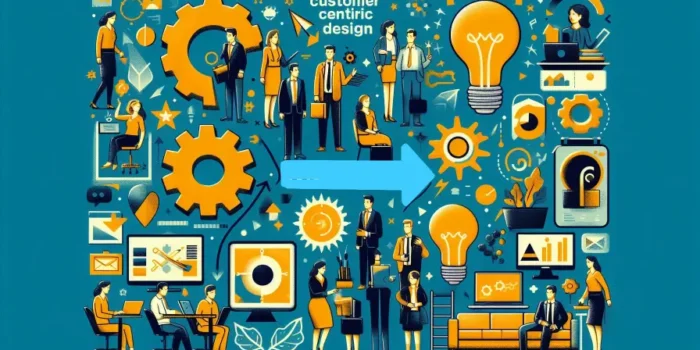The internet is undergoing a quiet revolution, and the world likes to call it Web3. Far from being a mere upgrade, Web3 is a fundamental rethinking of how we interact online. In fact, according to a report by PwC, the blockchain technology that underpins Web3 could generate an annual business value of over $3 trillion by 2030. The shift promises to decentralize power, giving users more control over their data, and offering a vast new playground for web developers. For anyone invested in the digital world, whether you’re a company thinking of ways to leverage new technology or a developer looking to build the next big thing, understanding Web3 and it’s impact on web development is crucial. So let’s dive into this transformative landscape and explore how it’s reshaping web development to its very core.
What is Web3?
If you’re intrigued by the future of the internet, you’ve likely come across the term “Web3 and web development.” But what exactly does Web3 mean? Unlike Web2, which relies on centralized servers, Web3 operates on decentralized networks, thanks to blockchain technology.
For the average user, this means a more secure, private, and user-centric online experience. Gone are the days when social media platforms or e-commerce websites controlled your data. With Web3, users hold the keys to the digital realm, securely stored on a blockchain.
Additionally, decentralized applications (dApps) are no longer a thing of the future; they’re here already, offering strong and reliable security features and a transparent user experience. And if you’re looking to equip yourself with the right Web3 development tools, you’re in luck. The market is flooded with platforms and languages designed specifically for this new wave of smart development.
And hey, wait! It doesn’t stop there. The Web3 development platform landscape is evolving rapidly, with the rise of smart contracts—automated, self-executing contracts with terms directly written into code—revolutionizing online transactions.
What is the Impact of Web3 on Web Development
The term “Web3 and web development” is more than a trending topic of our times; it’s a game-changer across many sectors. As businesses increasingly move towards digital solutions, Web3 offers an unprecedented level of security, transparency, and much more. Let’s learn how exactly it impacts web development.
Enhanced Security
One of the most significant advantages of Web3 in web development is the robust security features it brings to the table. Utilizing blockchain technology at its core, Web3 ensures that data is not stored in a single location, making it less susceptible to hacks and unauthorized access.
User-Centric Design
Web3 is all about giving control back to where it belongs – to the user, and this philosophy extends to web development as well. With the rise of decentralized applications (dApps), businesses can now offer a more transparent and user-centric experience to their users. This is particularly beneficial for companies that prioritize long-term relationships over quick sales.
Smart Contracts
Smart contracts are forever changing the way businesses operate and function online. These self-executing contracts with terms directly written into code can automate various business processes, from invoicing to supply chain management. In short, smart contracts offer a more efficient and transparent way to conduct transactions.
Utmost Flexibility
Web3 development platforms are designed to be flexible, accommodating the growing needs of businesses. Whether you’re a startup looking to scale or an established firm aiming for more efficient operations, Web3 provides the tools to achieve your goals.
Business Model Innovation
The tokenization capabilities of Web3 enable new business models that were not possible in the Web2 era. From decentralized finance (DeFi) to Non-Fungible Tokens (NFTs), Web3 opens up avenues for innovation and revenue generation.
Some Important Web3 Technologies and Tools
When it comes to building a future-proof digital presence, the right technologies and tools are essential. In the Web3 ecosystem, a variety of platforms and languages are designed to facilitate this new wave of Web3 in web development. Here are some key technologies and tools you should be aware of:
Blockchain Platforms
Blockchain is the backbone of Web3, providing the decentralized architecture that makes it unique and highly advantageous. Popular platforms like Ethereum, Polkadot, and Cardano are some examples that are leading the way in this space. These platforms offer relevant features for creating decentralized applications and smart contracts.
Decentralized Storage
Traditional web hosting services store data on centralized servers, making them vulnerable to attacks. Web3, on the other hand, uses decentralized storage solutions like IPFS and Filecoin to ensure data integrity and security.
Development Frameworks
Frameworks like Truffle and Hardhat simplify the development process by offering pre-built eco-systems for creating dApps and smart contracts. These frameworks are particularly useful for those looking to equip themselves with the right Web3 development tools.
APIs and Libraries
Web3.js and Ethers.js are popular libraries that allow for easy interaction with Ethereum-based applications. They are known for providing a set of APIs that make it simpler to integrate Web3 features and much more into existing web applications.
Major Challenges and Solutions in Web3 Development
Web3’s transformative potential comes with its own set of challenges, but the good part is that many ground-breaking solutions are also emerging to address them.
Data Privacy
Ensuring data privacy in a decentralized architecture is one of the primary concerns in the Web3 approach. To counter this, cryptographic techniques like zero-knowledge proofs are being employed to maintain privacy without compromising decentralization.
User Adoption
The shift from Web2 to Web3 can be intimidating for those who aren’t tech-savvy. To ease this transition, companies are focusing on user-friendly interfaces and educational resources, aiming to create more intuitive user experiences.
Cost of Transactions
High transaction fees can deter businesses from adopting Web3 features. However, techniques like off-chain transactions and rollups are being utilized around the globe to mitigate these costs, making Web3 more accessible to every business.
How to Get Started with Web3 Development
Entering the Web3 landscape might seem overwhelming, but it’s an exciting frontier with endless possibilities. Here’s a comprehensive compass to help you navigate your Web3 development journey:
Choose the Right Platform
Selecting the right blockchain service platform is crucial for the success of a Web3 and web development project in any company. While Ethereum is often the go-to for its extensive developer community and plethora of dApps, other platforms like Polkadot and Cardano offer unique advantages such as cross-chain compatibility and energy-efficient algorithms. Before choosing one, make sure you research thoroughly to find the platform that aligns with your project’s objectives.
Back to the Basics
Before taking things to the keyboard, it’s essential to have a solid understanding of blockchain technology and how decentralized applications (dApps) work. Numerous online courses, webinars, and tutorials are available to help you grasp the fundamentals. Investing time in learning now will save you from potential pitfalls later.
Experiment with Frameworks
Frameworks like Truffle, Hardhat, and more not only simplify the development process but also offer pre-configured environments for decentralized applications. How? These frameworks come with built-in libraries and tools that can significantly accelerate your development timeline.
Test and Deploy
Testing is a critical phase in any development process, let alone Web 3 in web development. Make sure to utilize testnets to simulate real-world scenarios, identify bugs, and fine-tune your application. Once you’re confident about the stability and functionality of your dApp, you can proceed to deploy it on the mainnet for public use.
Embracing Web3: The Next Frontier in Digital Transformation
As we navigate the ever-changing tides of the digital ocean, Web3 emerges as the wave that’s impossible to ignore. It’s not just an upgrade; it’s a reimagination of what the internet can be.
If you’ve been contemplating whether or not to dive into the intricacies of Web3, consider this your sign. The technology is ripe, the community is burgeoning, and the opportunities are boundless.
We are Segwitz, a tech strategist partner for growing businesses in Malaysia, and our team can guide you through this transformative journey, ensuring that you’re well-equipped to navigate the Web3 landscape. Learn more about Segwitz today.
We also publish value-packed content for the web and mobile app communities. Check out some of our other blogs here.
FAQs
Q1. What Are the Costs Associated with Web3 Development?
While the initial setup for a Web3 project might require investment in blockchain nodes and smart contract deployment, the long-term benefits often outweigh the costs.
Q2. How Does Web3 Differ from Web2 in Terms of User Experience?
Web3 aims to provide a more user-centric experience, giving users control over their data. However, the user interfaces are still evolving to become as intuitive as those in Web2.
Q3. Can Web3 Integrate with Existing Web2 Applications?
Yes, it’s possible to integrate Web3 features into existing Web2 applications. This hybrid approach allows businesses to transition smoothly to the decentralized web.





 Booking System
Booking System eCommerce
eCommerce On-Demand Services
On-Demand Services Community App
Community App Ordering App
Ordering App Loyalty App
Loyalty App Online Learning
Online Learning Directory
Directory Marketplace
Marketplace SaaS
SaaS P2P Platform
P2P Platform eHailing
eHailing Healthcare
Healthcare Finance
Finance Logistics
Logistics Education
Education Food & Beverage
Food & Beverage Retail
Retail FMCG
FMCG Sports
Sports Travelling
Travelling Manufacturing
Manufacturing Renewable Energy
Renewable Energy Mobile Application Development
Mobile Application Development Web Application Development
Web Application Development Source Code Review
Source Code Review Internet of Things (IoT)
Internet of Things (IoT) Cyber Security
Cyber Security